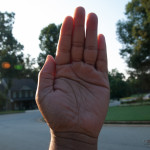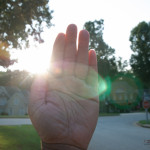As a photographer, we are lucky to have one of the biggest light sources known to man, the sun. Shooting with the sun can be your best friend or your worse enemy. It does not have to be that difficult if you follow these simple principles.
When using the sun as a light source, there are a few things to keep in mind.
Time of day
During different times of the day, the sun’s direction and height changes. These changes can be classified into five major times of day.
- Sunrise – Oftentimes called the A.M. golden hour, the sun is low and colors are very warm. This is one of the best times to take photos.
- Morning – As the day progresses, the sun rises higher. The higher the sun, the harsher the light
- Solar Noon – This is the sun’s highest point. This does not always coincide with noon. The resulting light is very harsh. Try to avoid this time of day if possible.
- Afternoon – Beyond the solar noon, the sun starts to lower and light is less harsh.
- Sunset – Oftentimes called the P.M. golden hour, the sun again is low and light is very warm. This is another desirable time to shoot.
Golden Hour Shot

Shot @ 7:48AM 1/125 sec @ F/6.3, ISO 100
Position of the sun
Most people believe that the sun “rises in the east and sets in the west.” This is true but only 2 days of the year. The sun only rises due east and sets due west during the spring and fall equinoxes. As the year progresses, the sun rises either north or south of “due east” and sets north or south of “due west.” (Where Do the Sun and Stars Rise?)
Each day the rising and setting points change slightly. At the summer solstice, the Sun rises as far to the northeast as it ever does, and sets as far to the northwest. Every day after that, the Sun rises a tiny bit further south. (Where Do the Sun and Stars Rise?)
At the fall equinox, the Sun rises due east and sets due west. It continues on it’s journey southward until, at the winter solstice, the Sun rises are far to the south as it ever does, and sets as far to the southwest. (Where Do the Sun and Stars Rise?)
What does all of this mean to us photographers? We can’t move the sun to the perfect location to get the shot. We have to move the subject or ourselves. The good news is, that usually just means turn around. One tip to get a preview of how the light is hitting your subject is placing your hand out in front of you and reposition yourself. See below:
Shots taken @ 8:15AM using 1/80 sec @ F/7.1. ISO 100
Sun behind me Sun camera Left
Sun slightly camera left Facing the sun
As you can see, the light falls on the subject (in this case my hand) differently as you reposition yourself. Now you know how to position yourself and the subject to get the desired results.
How about if you cannot move the subject as in with architectural photography? This is where knowing how the sun rises and sets in relation to the subject comes into play. The good news for iOS users, they can use Sol: Sun Clock by Juggleware, LLC. Sol: Sun Clock is an excellent app that tells you what the sun is doing at any given time based on location. It also notes the golden hour and solar noon times so you can plan your shoots. Even better, it has alarms so you can be alerted when that perfect time comes. Don’t worry Android users, there is something for you too. Sun Surveyor is an awesome app for both iOS and Android that uses a 3D compass to visualize the location of the sun. It is also integrated with maps and street view! It has become one of my go-to mobile apps. For the good “old fashioned” web browser user, don’t worry; there is Suncalc at http://suncalc.net. This website gives the same information as Sol:Sun Clock along with the direction the sun is shining in relation to the subject at any given time of the day.
I hope these little tips will take away some of the anxiety with shooting outdoors in natural light. Armed with this information, you will be ready to tackle outdoor shooting with ease!
Have more tips? Please share!
Works Cited
Where Do the Sun and Stars Rise? (n.d.). Retrieved from http://solar-center.stanford.edu/AO/sunrise.html





